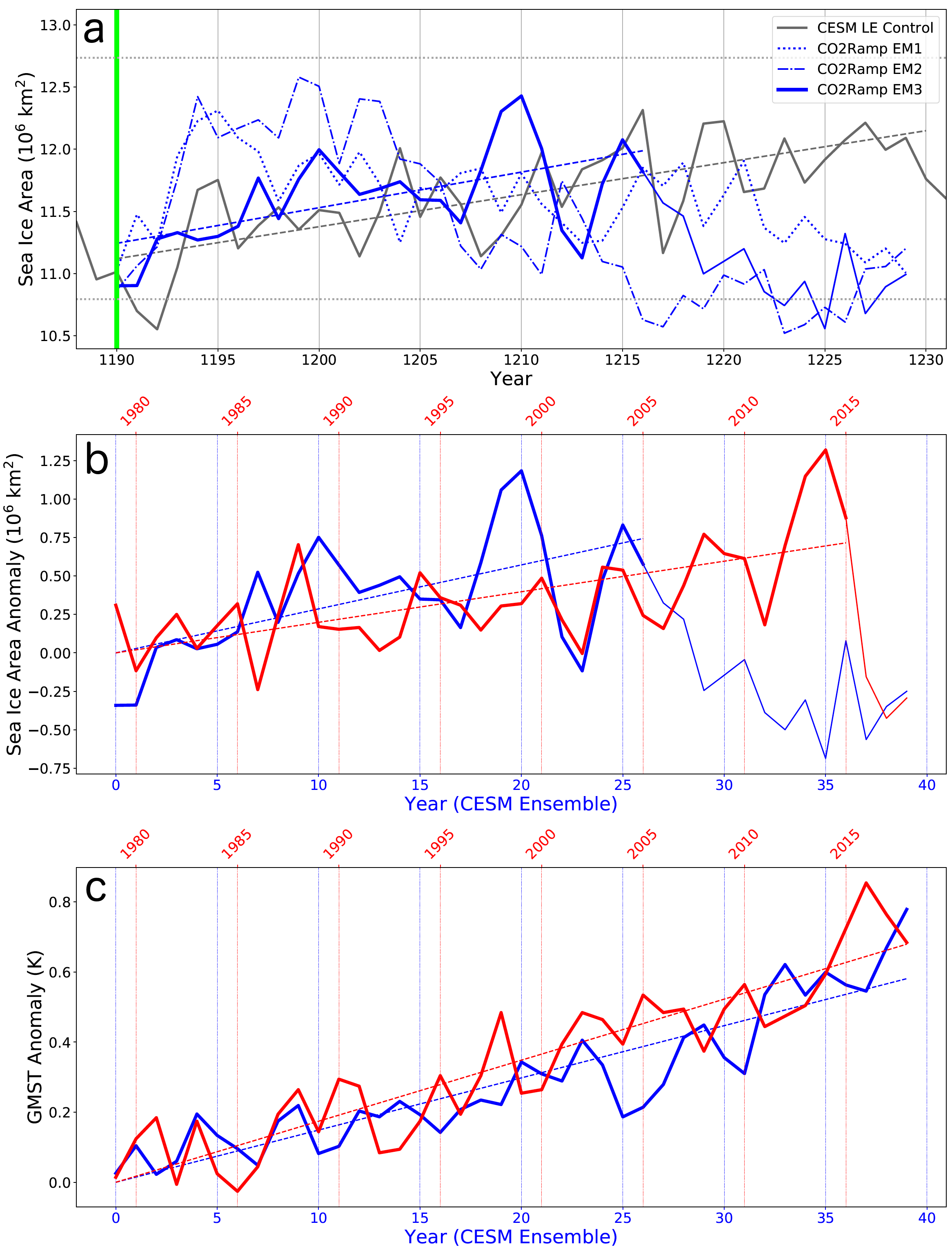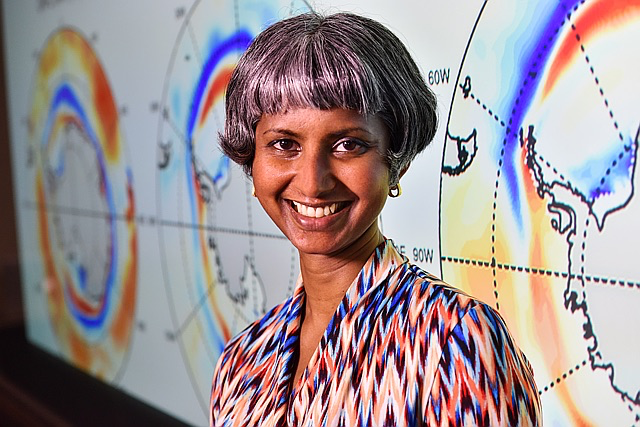Why did Antarctic sea ice area expand even as the rest of the globe warmed?
Published:
Antarctic sea ice area has been a conundrum for climate scientists: why did it expand in area from 1979 (when the satellite record began) to 2015, even as the rest of the globe warmed, and Arctic sea ice area retreated to historical lows? In my recent talk at the American Meteorological Society meeting on Polar Meteorology and Oceanography (May 2019), I presented recent work done in collaboration with Lorenzo Polvani (Columbia University) and Phil Rasch (Pacific Northwest National Laboratory, US DOE Office of Science) on this very topic.

We show that Antarctic sea ice expansion, even in the presence of rising atmospheric CO2, is possible if a global climate model is started from a warm Southern Ocean state. In such a case, sea ice expansion readily occurs in all 3 ensemble members (panel a), and occasionally requires multidecadal time scales (panel a, Ensemble Member 3), as found in the observational record (panel b, compare Ensemble Member 3 and observational record). Antarctic sea ice area expansion occurs concurrently with rising atmospheric CO2 and increasing global mean surface temperatures (panel c, compare Ensemble Member 3 with the observational record).
The implication here is that natural variability, which is extensive over the Southern Ocean, can cause Antarctic sea ice to expand, even when the climate is being forced in the opposite direction through increasing atmospheric greenhouse gases. Eventually, the forced response will come home to roost (so to speak), but it might take some time.
You can check out the talk on the AMS website. I did manage to be funny a couple of times. A manuscript based on the results shown is currently in revision at Geophysical Research Letters.
